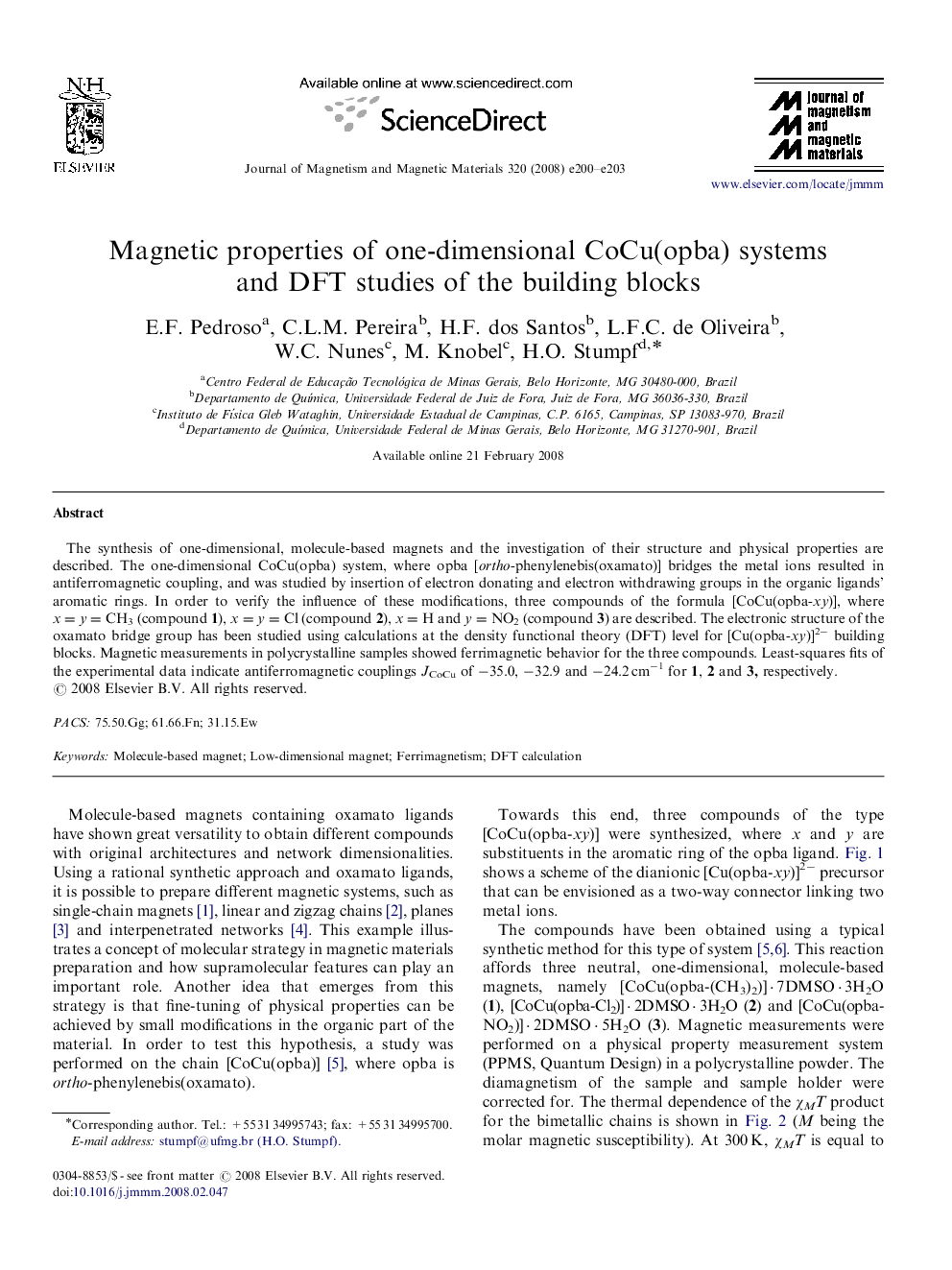| Article ID | Journal | Published Year | Pages | File Type |
|---|---|---|---|---|
| 1803082 | Journal of Magnetism and Magnetic Materials | 2008 | 4 Pages |
Abstract
The synthesis of one-dimensional, molecule-based magnets and the investigation of their structure and physical properties are described. The one-dimensional CoCu(opba) system, where opba [ortho-phenylenebis(oxamato)] bridges the metal ions resulted in antiferromagnetic coupling, and was studied by insertion of electron donating and electron withdrawing groups in the organic ligands' aromatic rings. In order to verify the influence of these modifications, three compounds of the formula [CoCu(opba-xy)], where x=y=CH3 (compound 1), x=y=Cl (compound 2), x=H and y=NO2 (compound 3) are described. The electronic structure of the oxamato bridge group has been studied using calculations at the density functional theory (DFT) level for [Cu(opba-xy)]2â building blocks. Magnetic measurements in polycrystalline samples showed ferrimagnetic behavior for the three compounds. Least-squares fits of the experimental data indicate antiferromagnetic couplings JCoCu of â35.0, â32.9 and â24.2Â cmâ1 for 1, 2 and 3, respectively.
Related Topics
Physical Sciences and Engineering
Physics and Astronomy
Condensed Matter Physics
Authors
E.F. Pedroso, C.L.M. Pereira, H.F. dos Santos, L.F.C. de Oliveira, W.C. Nunes, M. Knobel, H.O. Stumpf,
